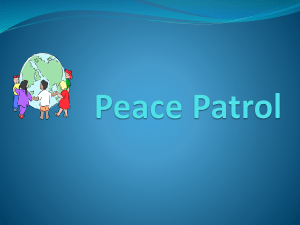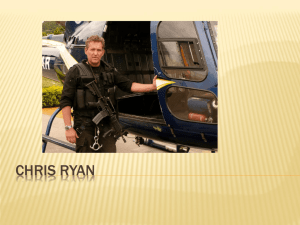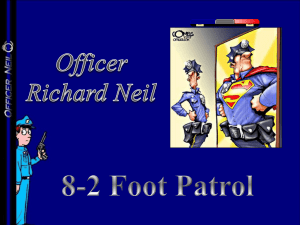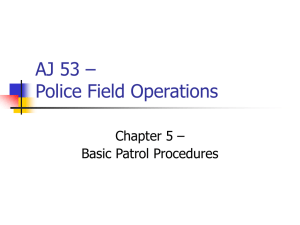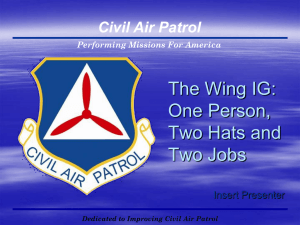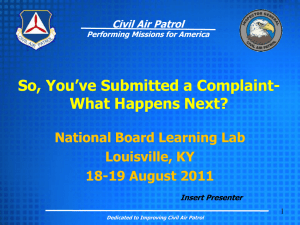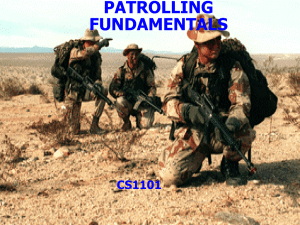Social Media for the Civil Air Patrol
advertisement
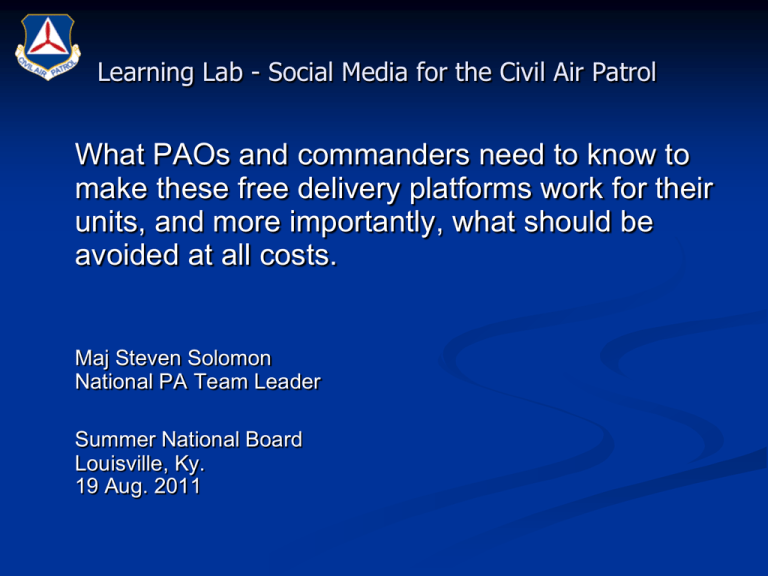
Learning Lab - Social Media for the Civil Air Patrol What PAOs and commanders need to know to make these free delivery platforms work for their units, and more importantly, what should be avoided at all costs. Maj Steven Solomon National PA Team Leader Summer National Board Louisville, Ky. 19 Aug. 2011 Learning Lab - Social Media for the Civil Air Patrol At the completion of this presentation, participants will be able to: Define social media and Web 2.0 Explain the impact social media has had on CAP Recognize how social media tools can be used by CAP Describe CAP’s regulations for using social media Develop a list of social media to support CAP Use tools to monitor social media trends and analysis Learning Lab - Social Media for the Civil Air Patrol Learning Lab - Social Media for the Civil Air Patrol In the beginning, Internet users were limited to passive viewing of websites with content created for them. There wasn’t any usergenerated content (pictures, videos, commenting, etc.) Learning Lab - Social Media for the Civil Air Patrol Software innovator Tim O’Reilly calls the current Internet era “Web 2.0,” because websites can now be created by anyone with a computer and Internet access. Wikipedia says Web 2.0 “allows users to interact and collaborate with each other in a social media dialogue .” Learning Lab - Social Media for the Civil Air Patrol Monologue has given way to dialogue. -Brian Solis, author of “Engage!” Learning Lab - Social Media for the Civil Air Patrol Traditional media (newspapers, radio, TV, magazines and billboards) were the major conduits of information for the past century. Now, 6.9 billion people use the Internet! Learning Lab - Social Media for the Civil Air Patrol Who uses social media? American Red Cross DHS EAA FAA FEMA U.S. Army U.S. Coast Guard Auxiliary The White House Learning Lab - Social Media for the Civil Air Patrol “The Air Force views personal Web sites and blogs positively, and it respects the rights of Airmen to use them as a medium of selfexpression.” Learning Lab - Social Media for the Civil Air Patrol Why use Social Media? • To supplement traditional media • To reach a wider audience • To increase delivery speed of message • Information is sent through the same mechanisms that citizens are sharing with friends and family Learning Lab - Social Media for the Civil Air Patrol Learning Lab - Social Media for the Civil Air Patrol Learning Lab - Social Media for the Civil Air Patrol Learning Lab - Social Media for the Civil Air Patrol Founded in 2004, Facebook is a social utility that helps more than 750 million active users communicate with their friends, family and co-workers. Learning Lab - Social Media for the Civil Air Patrol MySpace is an online community that lets you share photos, journals and interests with a network of 130 million mutual friends. Learning Lab - Social Media for the Civil Air Patrol Twitter is an online social networking and microblogging service with 200 million users. Learning Lab - Social Media for the Civil Air Patrol YouTube is a video sharing website, on which users can upload, share and view videos. Flickr is an image hosting and video hosting website. Learning Lab - Social Media for the Civil Air Patrol Learning Lab - Social Media for the Civil Air Patrol All levels of Civil Air Patrol, from National Headquarters to the local squadrons, are encouraged to create and use social media to help reach out to their membership, potential members, friends of CAP and the general public by telling their local and national CAP Stories. Learning Lab - Social Media for the Civil Air Patrol CAP currently engages in basic Web 2.0. Learning Lab - Social Media for the Civil Air Patrol CAP social media: •Must operate with the commander’s consent. •Shall be overseen by the public affairs officer . •Will make use of CAP logos and seals as per CAPR 900-2. •Will not violate OPSEC requirements. •Will respect copyrights in content. •Should use links to nationally produced multi-media, CAP news releases, articles and images. •Should be maintained and updated on a regular basis. Learning Lab - Social Media for the Civil Air Patrol Social Media may require a new approach to communications language: Facebook Friending Tagged Like Twitter Tweet / ReTweet Following / Followers (Tweeps / Twits) Mentions Learning Lab - Social Media for the Civil Air Patrol What can be posted? •New member welcomes •Promotions •Change of command •New duty assignments •Announcements •Tweet at activities •Training news •Mission exercise updates •Encampment news •Color guard dates •Video of events Learning Lab - Social Media for the Civil Air Patrol Social media can be measured quantitatively and qualitatively By the numbers: Total posts, tweets, mentions or responses indicate level of activity; Total followers/friends and count of “impressions” indicate potential audience; Views/clicks can be measured through YouTube; Tone: Social media analysis summaries can describe tone of coverage, from positive, neutral to negative. Learning Lab - Social Media for the Civil Air Patrol Social Media is here to stay and is critical to the success of CAP. Understand every communication mechanism that can impact the view of CAP by our stakeholders! Learning Lab - Social Media for the Civil Air Patrol Summary questions you should now be able to answer: • How can you use social media to get CAP information out to our stakeholders/citizens? • How could social media provide an advantage or disadvantage to traditional communication channels (such as radio, TV)? • How would PAOs use social media differently than traditional communication channels?
